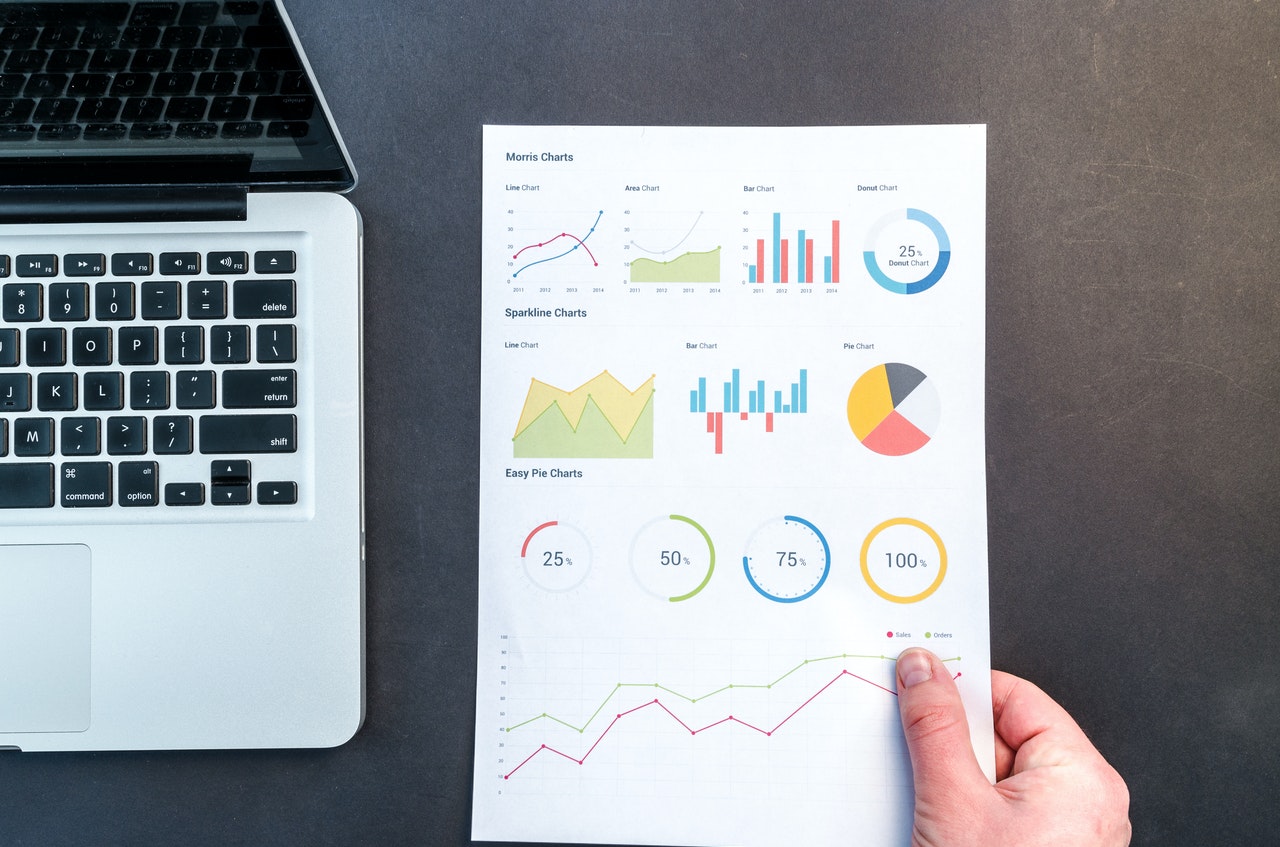By 2025 more than 163 zettabytes of data will be generated and most of it will come from internet-connected IoT devices and sensors. The greatest beneficiary will be the business world who will be managing at least 60% of this data to draw insight for their businesses. This is because data analytics is core to the digital transformation and growth strategies of any enterprise.
What is Business Analytics?
Business analytics involves collecting, processing, and analyzing raw data to extract business insight using statistical models and iterative methodologies. Business analytics goal is to identify relevant data and then use it to solve problems, increase productivity revenue, efficiency, and profits of a business. Business analytic is a subset of business intelligence, a field that is concerned with the identification and analysis of actionable data. Unlike descriptive business intelligence, business analytics is prescriptive and therefore biased more to data analysis, establishing patterns, and developing models to either clarify past events or predict future outcomes.
For this reason, business analytics certification courses have attracted a cream of analysts who intend to hone their skills in manipulating complex data, conduct quantitative analyses, and develop mathematical models to provide data-driven solutions for businesses.
Components of business analytics
- Data Aggregation. Encompasses all activities of data preparation including collecting, centralizing, and cleaning data to eliminate duplicated, incomplete, and unusable data. Data is obtained from an organization’s transactional records, from authorized third-party agents like shipping records, or volunteer records also from third party sources.
- Data mining. Sorting through large volumes of data to identifying patterns that were not previously recognized. Statistical tools used in data mining include classification, regression, and clustering.
- Association and sequence identification. Identifying predictable association and sequence patterns in consumer actions.
- Forecasting. A process that involves the use of historical data to forecast a future event.
- Predictive analytics. Describes processes through which companies create, deploy, and manage predictive scoring models to respond to customer churn, failure of equipment, and market trends.
- Optimization. This refers to a process in which companies identify best-case scenarios through engaging simulation techniques. This is important in establishing peak sales and inventory stock options that optimize the delivery schedule as well as achieving customer satisfaction.
- Data visualization. Described as a process in which information drawn from data is presented using highly interactive graphics. This is vital in showing modeling outputs and statistical predictions.
Business analytics roles
Typically, a career in business analytics would require one to have a relevant bachelor’s degree. Still, recruiters highly value a Master’s degree and certifications which gives professionals with these credentials better job prospects.
Business analytics professionals often report to the upper management while coordinating with the sales, marketing, and operations departments at the same level. A few of the roles in the business analytics field include:
- Management analyst. Works in all departments to identify processes that can be improved while also finding efficiency opportunities and solutions.
- Data scientist/analyst. Collecting, organizing, and analyzing data using mathematical models to offer actionable recommendations.
- Business intelligence analyst. Uses data to update the management on the state of the business i.e. its strengths, weaknesses, and also justifies the decisions that need to be taken by the company.
- Program and marketing managers. They build and deploy enterprise strategies and work towards expanding the markets of a company’s products to increase profitability.
- Big data analytics specialist. This role involves using the latest technology to propose solutions for improved business performances.
Future scope of Business Analytics
Business analytics as a career will continue to experience exponential growth going into the future. As data becomes central to business operations, enterprises are constantly on the lookout for professionals who can guide them into making smarter, faster data-driven decisions. Specialist professionals with deep analytical skills and those with in-depth knowledge of manipulating big data will be highly sought after.
Globalization has caused businesses in various parts of the world to apply similar standards and operational practices thus creating level ground for intense competition. The difference between business success and failure will be quality data-driven decision making. Business analytics provides the tools that businesses can leverage to facilitate faster, easier yet accurate decision-making.
Businesses across the globe are incorporating analytics in their systems to understand their customers better. On the other hand, advancements in AI and other accurate predictive tools continue to scale and redefine the execution of business analytics. The scope of business analytics in the future will be characterized by smart data capabilities, machine learning, and automation of the entire analytic process.
As expected, the enhanced capability of analytics tools to handle complex business data is expected to push up the demand for these tools, and ultimately the growth of the business analytics field. Secondly, such unprecedented growth has also been occasioned by the wide adoption of business analytic platforms that allow for cloud deployments, which has had a positive effect on both cost and time factors in business analytics. An indication for future growth for the analytics field is evident in the increased investments in the development of analytic tools that can be used to analyze real-time and streaming data. On the demand side, the increasing use of smartphones and digitization across industries are two other driving factors.
Trends to watch out for that impact the future of business analytics
-
Big data
Users increased use of internet and cloud technology has resulted in the unprecedented expansion of datasets collected by enterprises. The large overwhelming volume of data requires specialized skills and tools to gain relevant insights.
-
Data quality management (DQM)
DQM will attract more investors as it is key to ensuring that enterprises achieve efficient data analysis. Research conducted by Gartner indicates that poor data quality costs companies an average loss of $15 million annually. Going forward, enterprises will continue to implement data quality processes in all sectors to gain a competitive advantage.
-
Artificial intelligence
Increased deployment of AI in sectors like banking, investment, retail, hospitality requires competency in both analytics and AI. AI has grown into playing a significant role in delivering better and more accurate insights from big data and this trend is gaining traction fast.
-
Predictive and Prescriptive analytics tools
The analytics of the future will try to answer the question, ‘what will happen?’ Both predictive and prescriptive tools will be employed by professionals to get answers from big data.
-
Deep learning
Deep learning is considered the next stage of machine learning as it makes use of vast computing powers to handle a large amount of data, establish patterns, and come up with predictive results that could not be achieved before without being programmed.
-
Neural networks
Neural networks technology has facilitated data scientists to create computing systems that can operate better than a thousand human brains. Through enhanced computing powers, data scientists can process, sort, and identify patterns in a given set of data accurately.
-
Internet of Things
More devices are being deployed using the Internet of Things (IoT) which has allowed enterprises to access real-time intimate data of consumers from any part of the world.
-
Micro-segmentation
With the enlarging of data, an enterprise needs to have the ability to separate data into smaller targeted units. Through this process, organizations not only target ideal customers but also create funnels that lead those customers to take the desired actions. This process is driven by a process known as granular segmentation.
Conclusion
Based on these trends, the future of analytics is going to expand with many opportunities. The scope of analytics, as global phenomena, will open new opportunities for people with analytics skills to pursue fulfilling careers in fast-paced development environments.
Related Posts












